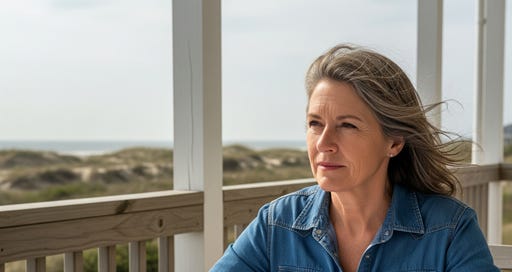The salt-laced wind whipped through Amelia’s hair as she sat on her porch in Kill Devil Hills, a half-century of life etched on her face. For years, she’d been a cartographer of connections, an architect of understanding, armed with her beloved causal loop diagrams. She’d spent countless hours with Kumu, tracing the intricate dance of variables, seeing the world as a vibrant tapestry woven with influence and feedback. She believed deeply in the power of qualitative models, in the nuanced beauty of a plus or minus sign indicating a reinforcing or balancing loop. They revealed the elegant mechanics of systems, often laying bare truths that had remained hidden in plain sight.
But lately, a quiet hum of dissatisfaction had begun to resonate within her. It started subtly, a nagging feeling that while she could see the structure of the dance, she couldn't quite feel its rhythm or predict its next steps. She could identify the forces at play in, say, the delicate balance of a plant-based diet's impact on long-term health, or the intricate dynamics of community resilience in the face of climate change. She could draw a beautiful diagram showing how access to fresh, whole foods might increase well-being, which in turn could reduce healthcare costs, creating a reinforcing loop of societal benefit. Yet, a part of her yearned for more. She could see the relationships, but she couldn't feel the magnitude, the pace, the potential for unintended consequences over time.
One blustery afternoon, while wrestling with a particularly stubborn diagram about the ebb and flow of small-town tourism, her gaze drifted to her well-worn copy of "Thinking in Systems." A passage about quantitative modeling caught her eye, almost as if the book itself was whispering an invitation. Insight Maker, her old friend, called to her from her laptop. She’d dabbled in it for simulations, of course, but always as a secondary tool, a complement to her qualitative maps. Now, something shifted.
With a deep breath, she decided to try something different. She took one of her meticulously crafted causal loop diagrams – one mapping the delicate balance of local fish populations and fishing pressure – and began to translate it into a stock and flow model. It was clumsy at first, like learning to walk again after years of graceful movement. She had to define rates, quantities, and delays – things her qualitative models had only hinted at. She assigned numbers, imperfect estimates at first, but numbers nonetheless.
Then, she pressed "run."
The lines on the graph began to move, not just showing a direction, but revealing curves, peaks, and troughs. It was as if the static picture she’d held in her mind suddenly sprang to life, a dynamic ballet unfolding before her eyes. She saw the fish population decline precipitously under certain fishing pressures, then rebound slowly, or not at all, under others. She watched as a delay in policy implementation led to an irreversible crash. It wasn't just how things were connected; it was when and how much.
A gasp escaped her lips. It was a visceral, emotional revelation. The qualitative map had shown her the skeletal structure of the system, elegant in its simplicity. But the quantitative simulation breathed life into it, revealing its beating heart, its vulnerabilities, its inherent momentum. She saw not just if a reinforcing loop would lead to growth or decline, but how fast and to what extent. The abstract became concrete, the theoretical, tangible.
Tears pricked her eyes, not of sadness, but of profound understanding and gratitude. It was like finally hearing the full symphony after only having read the sheet music. She had tripped over a deeper truth, a layer of understanding she hadn’t fully realized was missing. Her qualitative models were still invaluable, the bedrock of her understanding, providing the foundational insights. But the quantitative models, with their embrace of numbers and dynamic flows, offered a deeper immersion, a true feeling for the system’s pulse.
Amelia leaned back, the sound of the waves a gentle rhythm. She realized then that her journey as a systems thinker was an ever-evolving one. The beauty of the qualitative, the profound insights of the quantitative – they weren't adversaries, but partners, each illuminating a different facet of the intricate reality she so loved to explore. And with this new, deeper understanding, she felt an even greater sense of purpose, ready to unravel the world's complexities with both her heart and her mind fully engaged.





The most important reveal in this poetic work of art is the multiple representations, side by side. They can be viewed as representations of different parts of the system, different stakeholder perspectives on the system, or entirely different models of the system, all of which are actionable. Analysis of alternatives is a best practice through which systems architecture becomes a science. It also is a best practices through which systems science utilizes architecture as empirically falsifiable and continually improvable theories of a system.